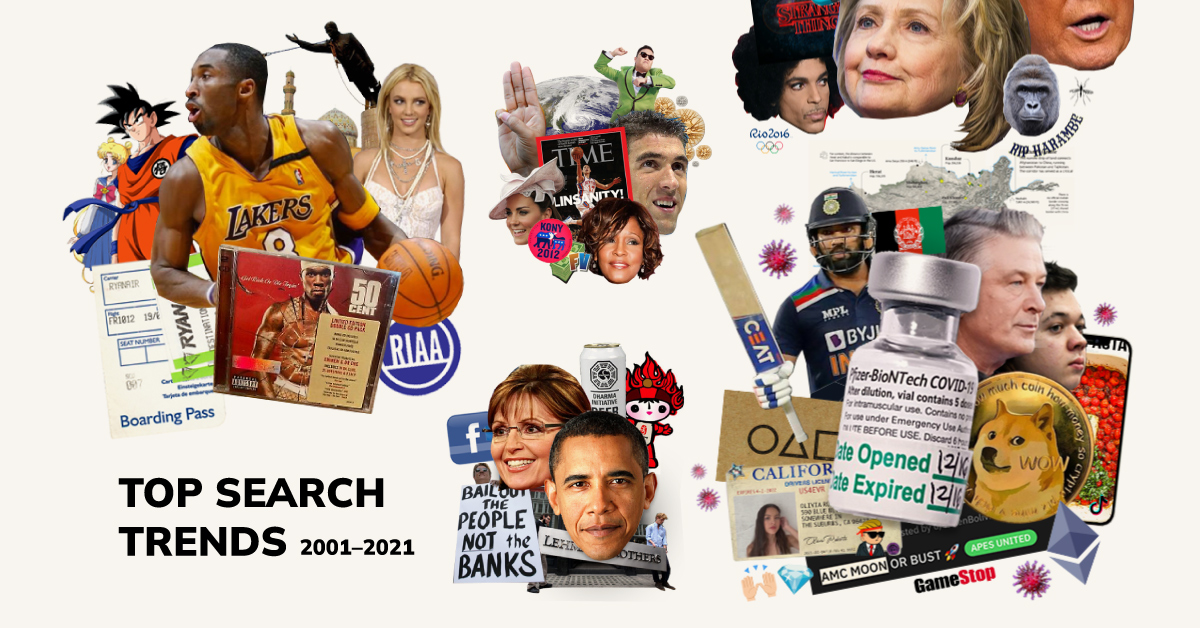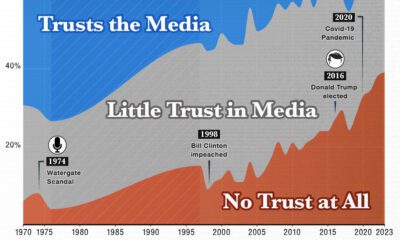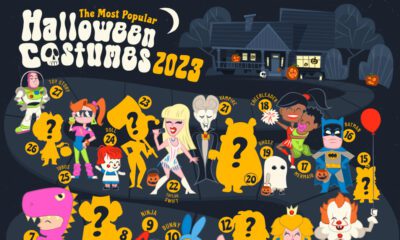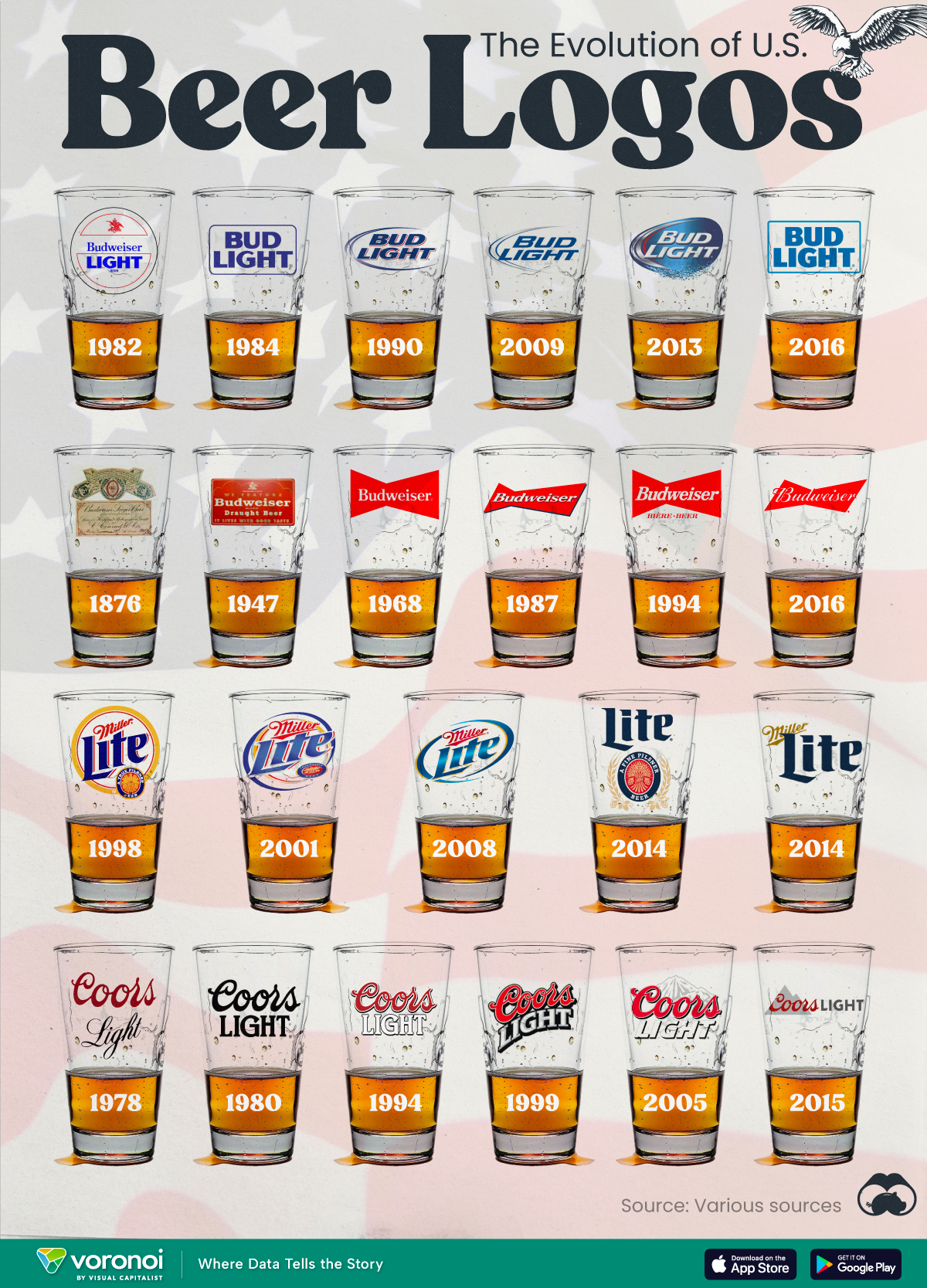Culture
20 Years of Top Trending Google Searches

20 Years of Top Trending Google Searches
For decades, Google search has been a go-to source for many when looking up directions, keeping up with the news, or seeking information on new and unfamiliar topics.
Today, Google processes about 3.5 billion searches per day. Because of its dominant market share, Google holds a vast archive of keyword searches that, when analyzed, provide an interesting glimpse into the key themes that have captured the world’s attention over the years.
This graphic, using data from Google Trends, goes back 20 years and highlights some of the top keyword searches since 2001.
Our editorial team dug through hundreds of top trending search terms from global and U.S. data and hand-selected their top picks, which are featured in the graphic above.
Trending vs. Volume
Before diving in, it’s worth emphasizing how top trending searches differ from popular searches, which are measured by sheer volume.
Trending searches are terms that have recently spiked in popularity. They focus on growth rather than total volume, and in this dataset, trending terms gauge year-over-year growth.
A good example is Donald Trump, who popped up in the news cycle during the 2016 presidential campaign. After the election, interest in Trump remained high. But his name doesn’t pop up on the Google trends list after 2017, since by that point, search volume for Trump had plateaued.
What are the most popular Google search terms, by volume? To be honest, they’re slightly less interesting than the top trending searches — YouTube is number one, followed by Facebook, then WhatsApp web.
The Globalization of Search Trends
The people and topics featured in Google’s top trends lists evolves as time goes on, reflecting broader adoption of the internet (and Google Search) around the world over time. Early themes are tied to mainstream U.S. pop culture and tech trends.
As time goes on, social media and smartphone adoption increase the granularity and volume of searches, resulting in top trends that are more participatory, diverse, and global in nature.
One final variable to keep in mind is that Google itself began to share more detailed search highlights with each passing year.
Two Decades of Google Searches: Macro Insights
Now that we’ve explained what trending searches actually measure, let’s dig into some of the key themes that have emerged over the last two decades of Google searches.
① People Love Sports
Over the last 20 years, sports have remained a continuous trend.
Every four years, the World Cup shows up as a top trending keyword across the globe. The Olympics also makes a regular appearance, along with Olympic athletes like Michael Phelps and McKayla Maroney.
Although the U.S. dominates the list, particularly when it comes to athletes, there’s still a good variety of international sports that go viral, especially as time goes on. In the last two years, cricket, rugby, and soccer have all made the top five trending lists.
② The Emergence of Celebrity 2.0
Over time, you can also see a transition from the conventional celebrity to celebrity 2.0, also known as the social media celebrity.
In the early 2000s, pop culture icons like Britney Spears, Eminem, and Jennifer Lopez flooded the trending searches, and traditional media forms like TV shows and Movies dominated the mass media categories.
But by 2011, YouTube stars like Rebecca Black started to make their way on the trending search lists. And in 2014, Meme emerged as a top trending category.
This transition nods to a larger shift in media, as digital has gradually overtaken traditional media as the dominant form of entertainment.
③ Natural Disasters are Top of Mind
Natural Disasters are a key trend throughout this data set as well.
Hurricanes are a particularly trendy word, showing up almost half the time—in eight of the 20 years. In 2005, Hurricane Katrina ranked second in the most searched category across the globe.
It continued to gain global attention—by 2006, Hurricane Katrina was still in the top five trending news searches.
Dig Deeper into Trending Google Searches
Our team enjoyed sifting through 20 years of Google data, and we hope you enjoyed this blast from the past too. If you’d like to dive deeper, you can explore Google’s full dataset here.
Happy searching.
Misc
The Evolution of U.S. Beer Logos
In this graphic, we analyze the evolution of popular U.S. beer logos like Budweiser, Coors Light, Bud Light, and more.
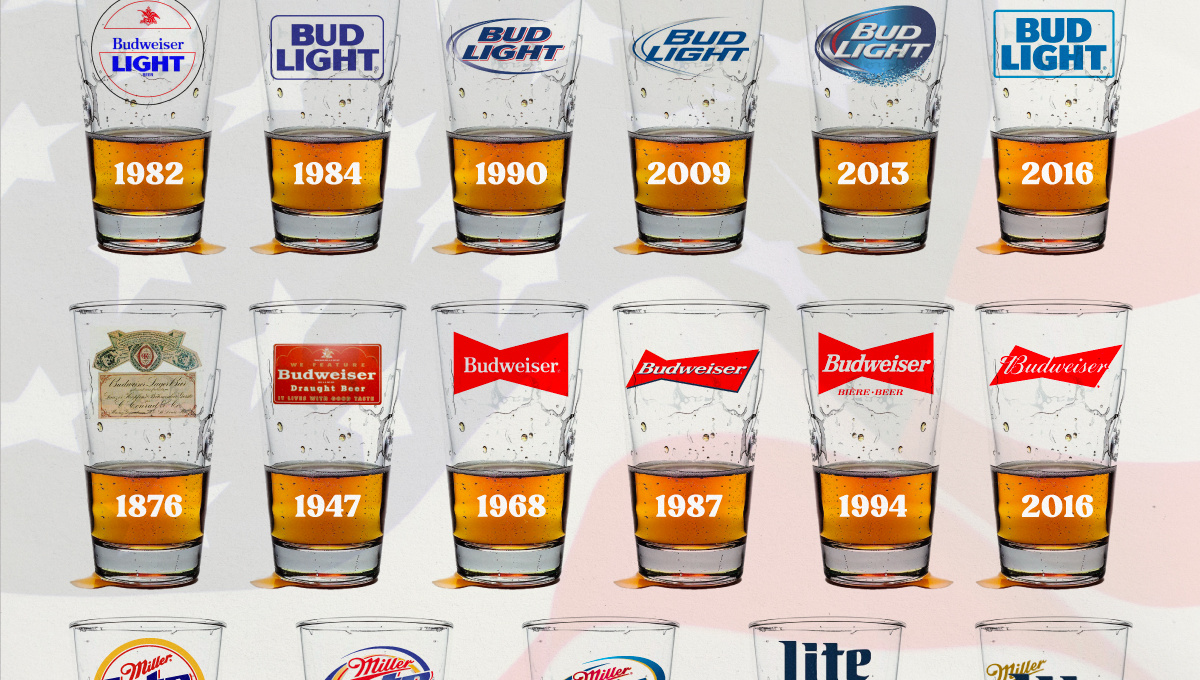
The Evolution of U.S. Beer Logos
This was originally posted on our Voronoi app. Download the app for free on iOS or Android and discover incredible data-driven charts from a variety of trusted sources.
Despite selling a popular product, beer companies have to be creative to stand out in a competitive market.
In this graphic, we analyze the evolution of some U.S. beer logos based on various sources. We chose brands based on a mixture of criteria, including popularity (based on YouGov surveys), availability of logo assets, and those with interesting developments.
Bud Light Back to the ’80s
Despite recent backlash and calls for a boycott after sending a commemorative can to transgender influencer Dylan Mulvaney, Bud Light remains one of America’s best-selling beers.
The brand of light beer, owned by the Anheuser-Busch company, has switched from its more circular logo with italic letters adopted in the 1990s back to the Bud Light badge of the 1980s. It is composed of heavy uppercase lettering, written in two levels in a shade of blue with the inscription placed on a solid white background and enclosed in a thin rectangular frame.
Miller Lite Goes Old School
After following a similar approach to Bud Light’s branding throughout the 2000s, Miller Lite decided to undergo a major rebranding in 2014.
The company returned to its 1970s roots, once again combining a white can with its original blue, gold, and red logo. The redesign was largely considered a success, given that Miller Lite sales immediately increased following the change.
A Symbol of American Brewing
The oldest brand on our U.S. beer list, the Budweiser logo, has undergone more than 15 changes over the years.
The design of two connected triangles represents a red bow tie, as a symbol of American brewing.
The colors of the Budweiser logo include a vibrant red, which helps the logo stand out and be easily recognizable from a distance. Studies also suggest that the color red stimulates appetite. Meanwhile, the white inscription symbolizes purity and cleanliness.
Curious to learn more about the beer market? Check out this graphic about global beer consumption.
-

 Business6 days ago
Business6 days agoThe Top Private Equity Firms by Country
-

 Countries2 weeks ago
Countries2 weeks agoCountries With the Largest Happiness Gains Since 2010
-

 VC+2 weeks ago
VC+2 weeks agoVC+: Get Our Key Takeaways From the IMF’s World Economic Outlook
-

 Demographics2 weeks ago
Demographics2 weeks agoThe Countries That Have Become Sadder Since 2010
-

 Money2 weeks ago
Money2 weeks agoCharted: Who Has Savings in This Economy?
-

 Technology2 weeks ago
Technology2 weeks agoVisualizing AI Patents by Country
-

 Economy2 weeks ago
Economy2 weeks agoEconomic Growth Forecasts for G7 and BRICS Countries in 2024
-

 Wealth1 week ago
Wealth1 week agoCharted: Which City Has the Most Billionaires in 2024?

